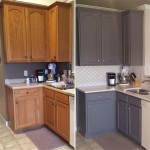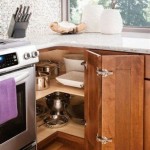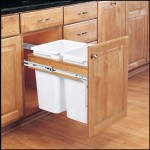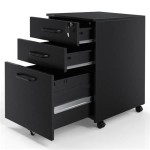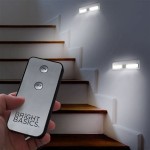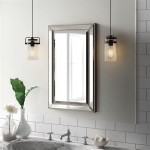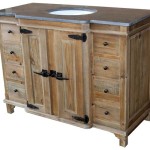Putting a Microwave in a Cabinet: Considerations and Guidelines
Integrating a microwave oven into kitchen cabinetry is a common design choice, offering space-saving benefits and contributing to a cleaner, more streamlined aesthetic. However, this seemingly simple alteration requires careful planning and execution to ensure functionality, safety, and the longevity of both the appliance and the surrounding cabinetry.
The decision to house a microwave in a cabinet involves a number of factors, from the type of microwave best suited for this installation to the construction of the cabinet itself. Failing to address these considerations can lead to overheating, restricted airflow, and potential damage to the appliance and the surrounding structure.
This article will delve into the key aspects of installing a microwave in a cabinet, including microwave types, cabinet specifications, ventilation requirements, electrical considerations, and installation best practices. Adhering to these guidelines will help ensure a safe, efficient, and visually appealing integration of the microwave into the kitchen design.
Selecting the Appropriate Microwave
Not all microwaves are created equal, and some are better suited for cabinet installation than others. The primary distinction lies between countertop models and built-in models, each with its own set of design features and ventilation requirements.
Countertop microwaves are designed to sit on a flat surface with adequate space around them for ventilation. While it is possible to place a countertop microwave inside a cabinet, it is generally not recommended without significant modification and careful attention to airflow. Countertop models typically vent from the rear or sides, and enclosing them in a cabinet without providing sufficient clearance can lead to overheating and reduced performance. More importantly, it could pose a fire hazard.
Built-in microwaves, on the other hand, are specifically designed for cabinet installation. These models often feature dedicated venting systems that exhaust heat to the front or top of the unit, allowing them to be installed within tighter confines. Built-in microwaves also typically have trim kits that provide a finished, professional look and help to conceal any gaps between the microwave and the cabinet.
Another type of microwave commonly used in kitchen designs is the over-the-range (OTR) microwave. While these are designed to be mounted above a cooktop, they are not typically suited for installation within a standard cabinet. OTR microwaves serve a dual purpose, acting as both a microwave and a range hood, and their ventilation system is specifically designed to remove smoke and grease from the cooktop below. Attempting to install an OTR microwave in a cabinet would compromise its ventilation capabilities and potentially damage the cabinet itself.
Therefore, for a seamless and safe cabinet installation, a built-in microwave model is generally the preferred choice. These models are designed with the specific needs of cabinet integration in mind, offering proper ventilation and a more aesthetically pleasing appearance.
Cabinet Construction and Specifications
The cabinet intended to house the microwave must be constructed to withstand the appliance's weight and provide adequate space for ventilation and operation. Standard kitchen cabinets may require reinforcement or modification to meet these requirements.
The first consideration is the cabinet's weight capacity. Microwaves can be surprisingly heavy, especially larger models. The cabinet's shelves and supporting structure must be strong enough to bear the weight of the microwave without sagging or collapsing. This may necessitate reinforcing the shelves with additional supports or using thicker, more durable materials like plywood or solid wood.
Proper dimensions are also crucial. The cabinet opening should be slightly larger than the microwave's exterior dimensions to allow for easy installation and removal. However, it should not be so large that the microwave appears to be floating within the cabinet. Ideally, the gap between the microwave and the cabinet walls should be minimal, but sufficient for ventilation and to accommodate any trim kit that may be used.
When measuring for the cabinet opening, it is essential to consult the microwave manufacturer's specifications. These specifications will provide the exact dimensions required for the microwave, including any necessary clearances for ventilation. Ignoring these specifications can lead to installation difficulties and potential safety risks.
For countertop microwaves being placed in a cabinet, the cabinet must be deep enough to accommodate the entire depth of the microwave, including any door handles or protruding components. In many cases, this might require modifications to the back of the cabinet to allow the microwave to sit flush with the front.
Finally, the cabinet's material should be heat-resistant and durable. Microwaves generate heat during operation, and prolonged exposure to this heat can damage or warp the cabinet material. Using heat-resistant materials like melamine or plywood with a heat-resistant finish can help to protect the cabinet from damage.
Ventilation and Electrical Requirements
Proper ventilation is paramount when installing a microwave in a cabinet. Insufficient ventilation can lead to overheating, reduced microwave performance, and potentially hazardous conditions. Similarly, ensuring the electrical supply is adequate and properly grounded is essential for safe and reliable operation.
Microwaves generate a significant amount of heat during operation, and this heat needs to be dissipated to prevent damage to the appliance and the surrounding cabinetry. Built-in microwaves typically have dedicated venting systems that exhaust heat to the front or top of the unit. However, even with these venting systems, it is important to ensure that there is adequate airflow around the microwave.
For countertop microwaves being placed in a cabinet, creating adequate ventilation can be more challenging. One option is to cut ventilation holes in the back or sides of the cabinet to allow for air to circulate. These holes should be strategically placed to maximize airflow and prevent heat from building up inside the cabinet.
Another option is to use a microwave shelf with built-in ventilation. These shelves are designed to sit inside the cabinet and provide a platform for the microwave while allowing air to circulate freely around the appliance. Some models even include fans to further enhance ventilation.
In addition to ventilation, it is essential to ensure that the microwave is connected to a properly grounded electrical outlet. Microwaves typically require a dedicated 120-volt outlet with a 15- or 20-amp circuit breaker. Overloading the circuit can lead to tripped breakers or even electrical fires.
The electrical outlet should be located within easy reach of the microwave's power cord, but it should not be directly behind the appliance, as this can restrict airflow and make it difficult to access the outlet for maintenance or repairs. A nearby outlet on the side of the cabinet is often the best solution.
It is always recommended to consult with a qualified electrician to ensure that the electrical supply meets the microwave's requirements and that the outlet is properly grounded. Attempting to install the microwave's electrical connection without proper knowledge and experience can be dangerous and potentially illegal.
In conclusion, integrating a microwave into kitchen cabinetry requires careful consideration of various factors, including microwave type, cabinet design, ventilation needs, and electrical requirements. By addressing these aspects diligently, one can achieve a safe, functional, and aesthetically pleasing kitchen design.

Seven Places To Put Your Microwave That Aren T On The Counter

6 Perfect Places To Put The Microwave In Your New Kitchen

6 Places To Put The Microwave In Your New Kitchen

Can You Put A Microwave In Cabinet Sharp Usa Blog

6 Perfect Places To Put The Microwave In Your New Kitchen

9 Places To Put The Microwave In Your Kitchen

Can You Put A Microwave In Cabinet Sharp Usa Blog

Seven Places To Put Your Microwave That Aren T On The Counter

Building A Microwave Shelf The Stonybrook House

The Best Built In Microwave Cabinet Height Green With Decor
See Also

